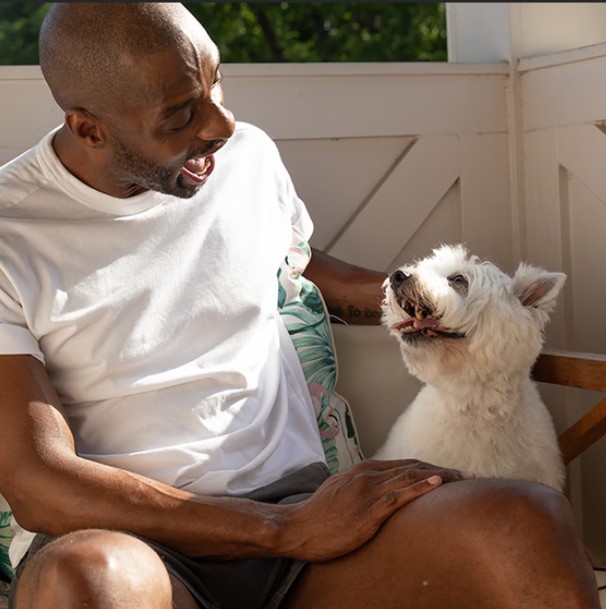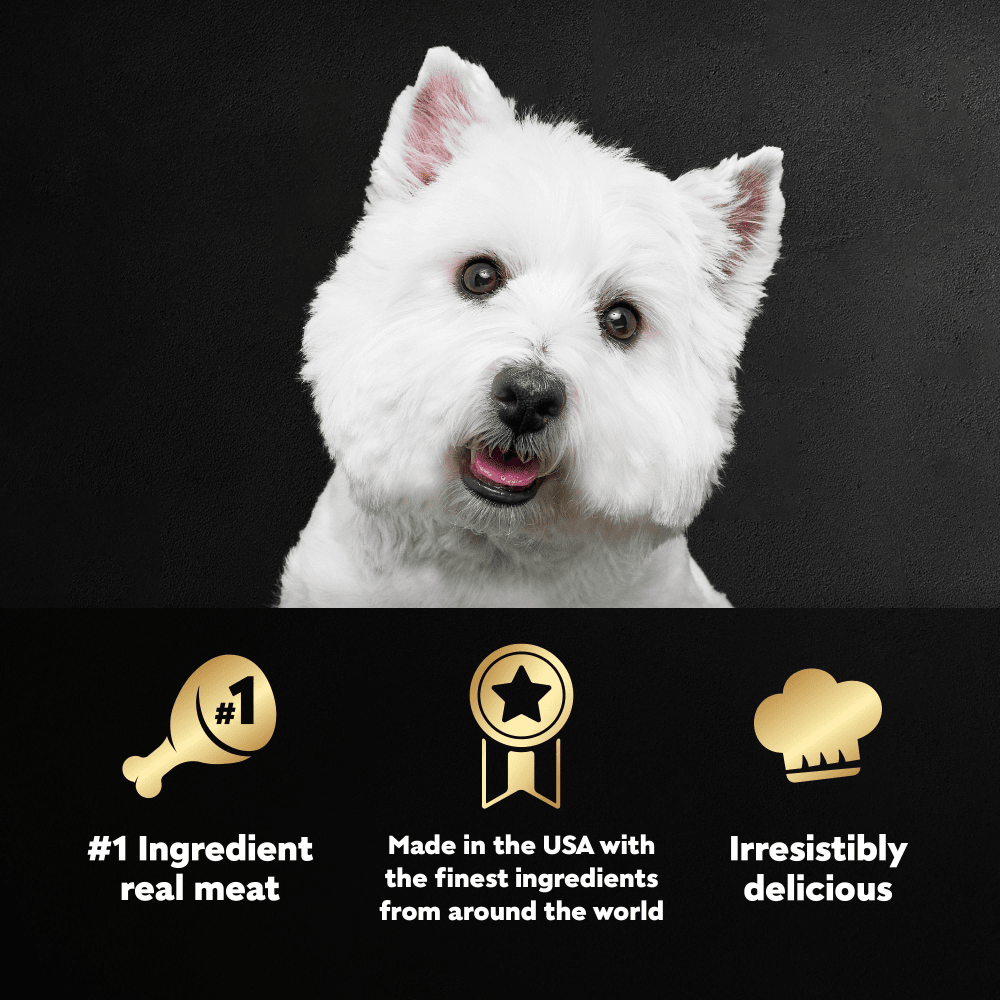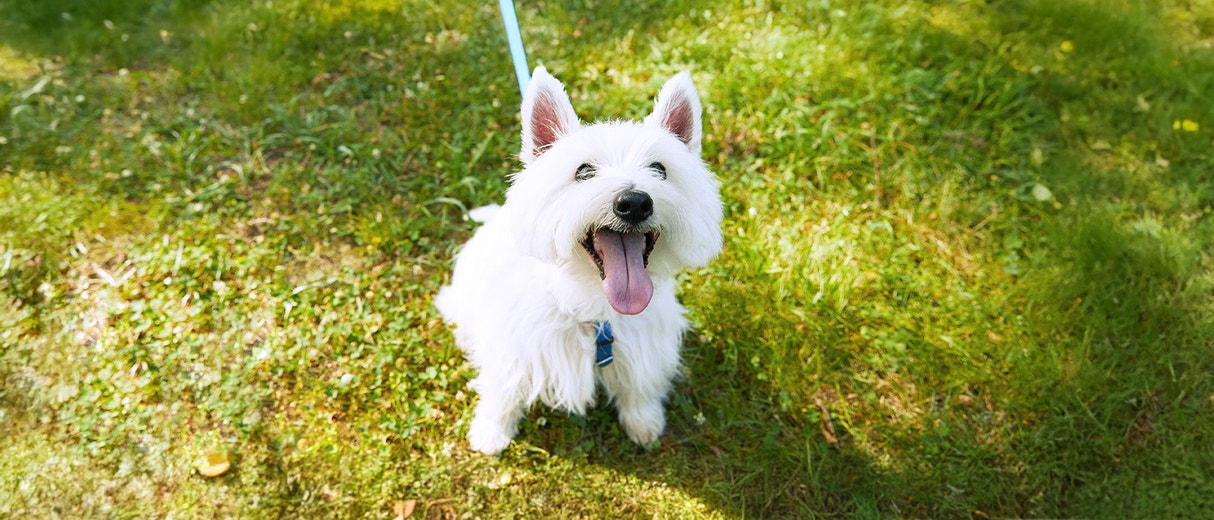
How Much Wet Food Should You Feed Your Dog?
Determining how much wet food to feed a dog goes a long way toward keeping them happy and supporting their overall health. Thankfully, all you need to create a well-balanced diet for your pup are a few simple facts about them and their lifestyle.
In this article, we discuss the most important factors that affect how much wet food to feed a dog and give you tips to make their diet the best it can be.
Factors That Affect How Much Wet Food to Feed a Dog
Weight
One of the most important factors that affects how much wet food(open in new tab) to feed a dog is their weight. Dogs of different breeds, sexes, and ages have an ideal weight range that determines whether they’re underweight, overweight, or just right.
As we’ll discuss shortly, activity level also plays a factor in how much to feed your dog every day. Just like you, the more active they are, the more food they need to keep everything running smoothly.
Most types of food — both wet and dry — will come with feeding guidelines based on weight, so it’s a good idea to know (or find) that number.
But, how can you get your dog to stand still long enough to get their weight? And will they even fit on the person scale you have in your bathroom?
Try this little trick:
Weigh yourself
Pick up your dog and stand on the scale together
Subtract your weight from the bigger number
That’s your dog’s weight!
For example, if you weigh 180 pounds by yourself and you and your dog together weigh 220, your dog weighs 40 pounds. With that number, you can use the feeding guidelines on your dog food packaging to determine how much to feed them.

Age
Your dog’s life can be divided into three basic stages:
Puppy
Adult
Senior
Why? Because, in the early years of their life, puppies are growing much faster than their adult counterparts and need food that is appropriate to fuel that growth.
On the other hand, in the later years of life, senior dogs have all but stopped growing and, in most cases, are less active than they used to be.
Talk to your veterinarian about how to create the perfect diet for your dog at any age.
Activity Level
As we mentioned, activity level also plays a part in determining how much wet food to feed a dog. In general, more active dogs(open in new tab) need more calories to support their energetic lifestyle. This is true regardless of their age or stage of life.
For example, an active senior dog will need more food than a sedentary senior dog of the same breed.
Once you figure out how much food to feed your dog based on their weight and age, you may choose to increase or decrease the total slightly based on how much physical activity they get every day.
Keep in mind that their activity level may change over several months, weeks, or even days. If you notice your dog slowing down or speeding up, you may choose to give them less or more food throughout the day.
Above all, keep an eye on their weight — as the ideal weight range will determine what’s healthy — and adjust their diet accordingly.
Breed
Some breeds are naturally more energetic than others. As a result, they often have a higher metabolism, which causes them to burn through their food faster than a dog of a different breed.
Keep in mind that this higher metabolism may be going on inside them despite the energy level they display on the outside.
If you’re the proud parent of a high-energy breed(open in new tab), you might consider increasing the total amount of food you give them each day so they have enough calories to support their metabolism, digestion, and lifestyle.
Consult with a veterinarian for more information about how your dog’s breed affects their metabolism.
General Feeding Guidelines
Puppies
Puppies need specially formulated food to support their rapid development. That’s why it’s so important to feed them puppy food rather than regular adult food.
According to Animal Medical Center of Chicago(open in new tab), puppies that are four months or younger and weigh five pounds need 390 calories per day. Puppies that are four months or older and weigh five pounds need 260 calories per day.
If you’re feeding them CESAR® Puppy Chicken & Beef Recipe Classic Loaf in Sauce(open in new tab), this translates to:
For puppies under four months, feed 3 ½ trays per five pounds of body weight per day.
For puppies four months and older, feed 2 ¼ trays per five pounds of body weight per day.
If you’re concerned that this might not be enough or might be too much for your young pup, talk to a veterinarian for more information.

Adult Dogs
Adult dogs typically have different caloric requirements than puppies and senior dogs. For example, a 25-pound adult dog needs approximately 779 calories per day.
If you’re feeding them CESAR® Grilled Chicken Classic Loaf in Sauce(open in new tab), this translates to:
3¾ trays per 10 pounds of body weight or about 9 ½ trays for a 25-pound adult dog
Keep in mind that you may need to adjust that up or down a bit based on their exact weight, age, and activity level. Start with the recommendations on the package and then consult with a veterinarian to zero in on how much wet food to feed your dog each day.
Senior Dogs
As we mentioned, senior dogs typically have different caloric and nutritional needs than adult dogs because of the decrease in activity level that comes with age.
When your dog reaches the senior stage for their breed, talk to your vet about whether or not you need to adjust the amount of food you feed them.
For example, most senior dogs should eat 25 to 30 calories per pound of weight each day. For a 10-pound dog, that’s 250 to 300 calories per day (open in new tab).
It’s important to note that even if your dog has crossed over into the senior stage of their life, they may not need you to adjust their diet right away. Healthy, active senior dogs can often continue with the diet they had during their adult years.
Tips for Feeding Your Dog Right
Choose a High-Quality Wet Food
Focus on feeding your dog high-quality wet food that meets the standards set by the Association of American Feed Control Officials(open in new tab) (AAFCO) Dog Food Nutrient Profiles.
Provide Access to Fresh Water
Your dog needs water just as much as they need high-quality food. Provide access to fresh water by refilling their bowl at least once a day (sometimes more). Also, be sure to wash their water bowl regularly to keep their water nice and clean.
If you notice drastic fluctuations in your dog's water intake, you might consider taking them to the vet for a checkup.

Adhere to a Feeding Schedule
Like you, most dogs enjoy knowing when their next meal will arrive. Stick to a regular feeding schedule that also takes into account your busy life. Depending on the various factors we discussed earlier, dogs will typically do well on two or three meals per day.
So, you could feed them before you leave the house in the morning and then feed them again around dinner time (with a treat or two thrown in there for being a good boy or girl!).
For example, if you’re feeding your 10-pound adult dog CESAR® Home Delights™ Slow Cooked Chicken & Vegetable Dinner in Sauce(open in new tab) you would divide the 3 ⅓ trays per day into two meals of a little more than 1 ½ trays each.
Give Your Dog the Wet Food They Deserve
After figuring out how much wet food to feed a dog, the next best thing you can do for your pooch is to feed them high-quality wet dog food that’s both delicious and nutritious.

CESAR® Canine Cuisine is the answer! Our gourmet wet dog food(open in new tab) recipes are available in a wide range of flavors and textures to satisfy even the pickiest eaters.
You can serve CESAR® Canine Cuisine by itself or mixed with any of our dry recipes(open in new tab) to meet the nutritional levels established by the Association of American Feed Control Officials (AAFCO).
A complete and balanced diet will help to keep your dog happy and support their health over their life. Just follow the tips in this article and consult with your veterinarian to create a feeding schedule that’s just right for your dog.
For more information on how to provide the best diet for your dog, visit Cesar.com(open in new tab) today.



